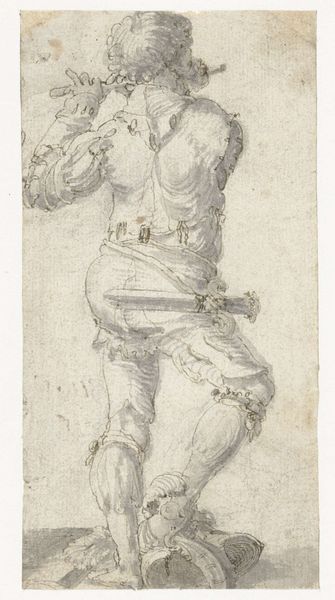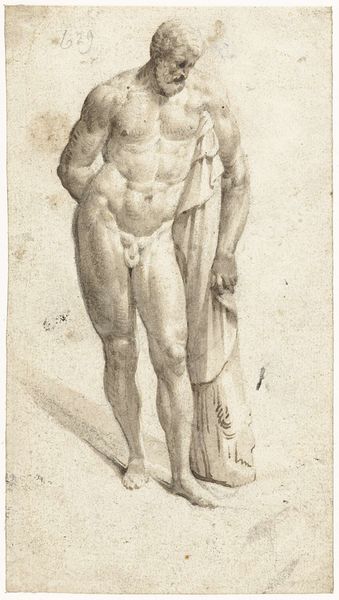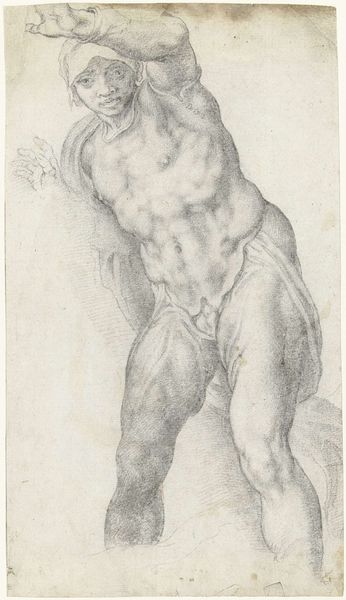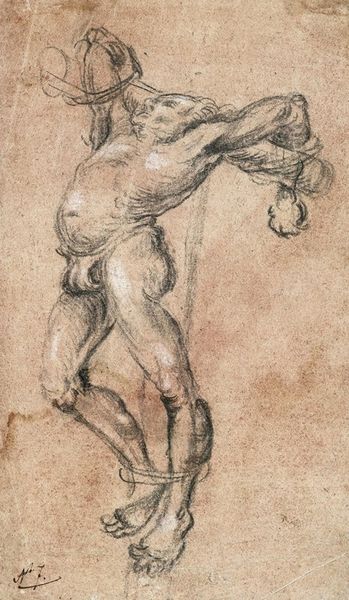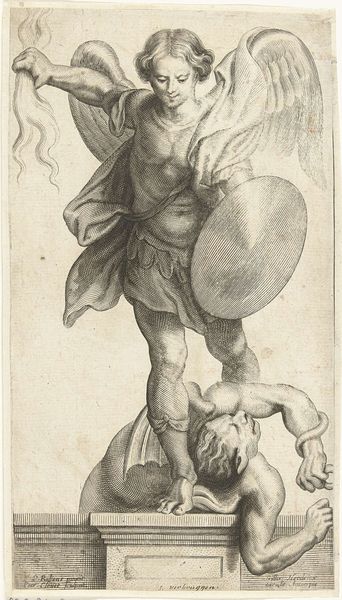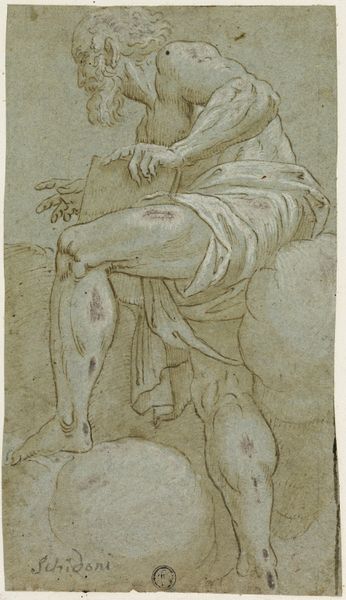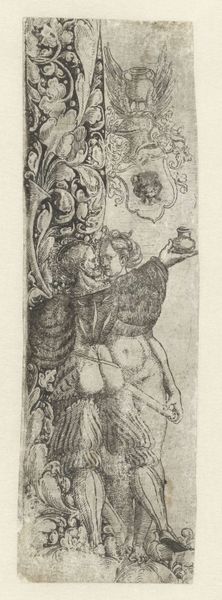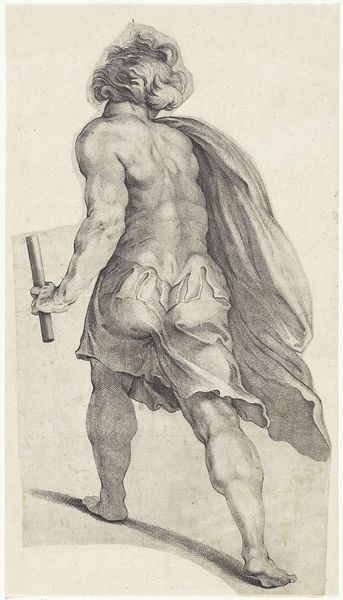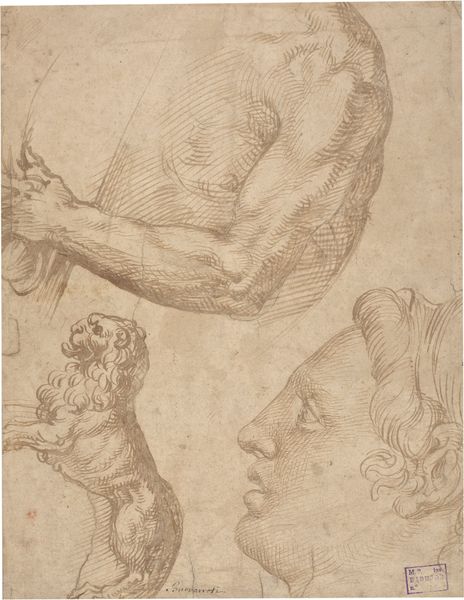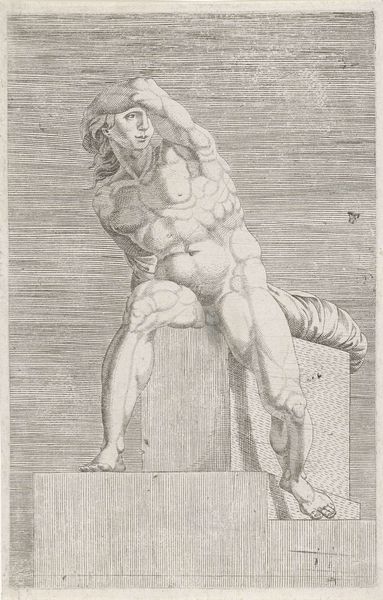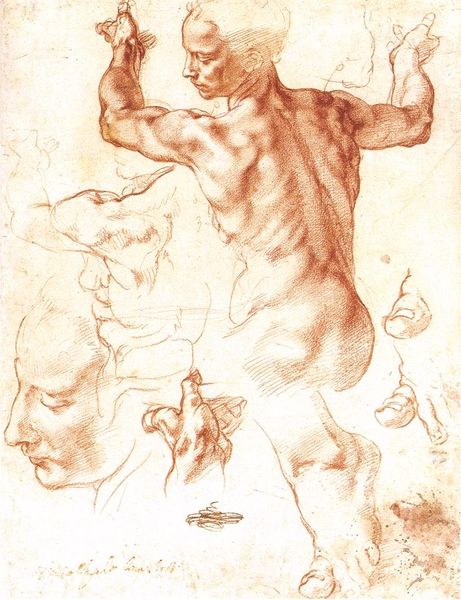
drawing, pen
#
portrait
#
drawing
#
amateur sketch
#
toned paper
#
light pencil work
#
pencil sketch
#
incomplete sketchy
#
figuration
#
11_renaissance
#
personal sketchbook
#
pencil drawing
#
detailed observational sketch
#
pen
#
pencil work
#
nude
#
initial sketch
Dimensions: height 159 mm, width 84 mm
Copyright: Rijks Museum: Open Domain
Curator: This is a drawing by Jost Amman, a "Naakte man met een door wijnloof omkranste hoed," dating roughly between 1549 and 1591. It’s currently part of the Rijksmuseum’s collection. Editor: My first impression is that it's very dynamic. The hatching technique used for shading gives the figure a real sense of volume and musculature. It’s got a raw, immediate feel to it. Curator: Absolutely, but that feeling belies a specific artistic and social function. Amman was creating pattern books for artisans. So these weren’t artworks intended for display so much as instructional tools showing models, like this nude man, that craftsmen could adapt. Editor: Ah, so the musculature isn't just artistic flourish. It’s functional. Like a classical statue that demonstrates a deeper, ideal form! Curator: Exactly. The figure evokes classical sculpture in its contrapposto pose. And notice the figure is adorned with a vine leaf crown, hinting at Bacchus, god of wine and fertility. Amman consciously tied this work to humanist values through classicism and allegory. Editor: You can also consider this work an opportunity for Amman to exhibit his command of representing light and form on paper using line alone. Look how the artist captures the texture of the skin and the weight of those rather bulky looking vessels. Curator: Yes, and perhaps the subject alludes to both skill and production. Vineyards supported an economy while, from the perspective of religious moralism, testing the control and balance of individuals and institutions. Editor: I suppose even a drawing ostensibly aimed at workshops can contain so much depth. The skill of Amman to use so few strokes to render depth, texture, and movement still surprises me. Curator: Right, Jost Amman’s image is far more than just lines on paper; it serves as a cultural artifact reflecting Renaissance artistic production and workshop practices. It prompts us to investigate this artwork not simply as aesthetic matter, but also as evidence of larger socio-political structures.
Comments
No comments
Be the first to comment and join the conversation on the ultimate creative platform.
